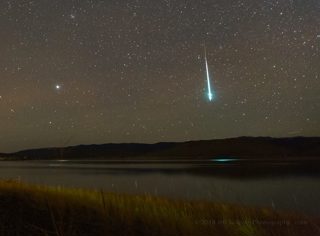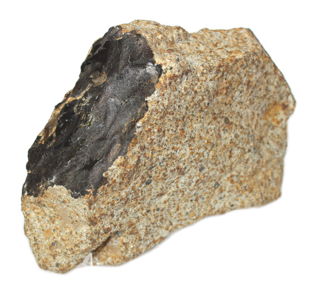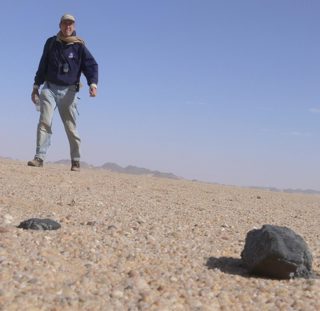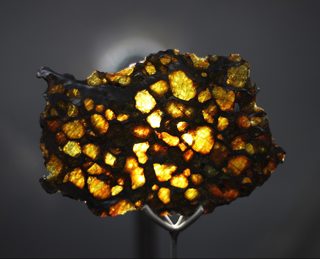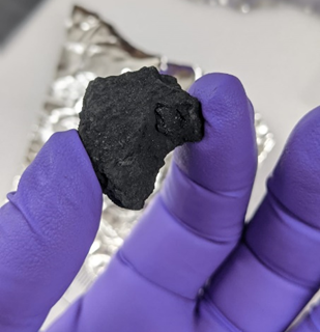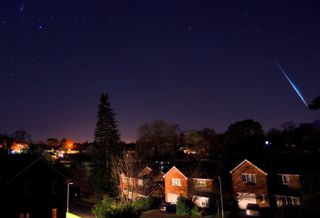
What was that bright light in the sky?
- 31st Jan 2023
- Author: Dhara Patel
Fireballs and meteors
Meteors are quick flashes of light that streak across the sky caused by space rocks burning up as they fall through the Earth’s atmosphere at high speed – blink and you could miss it.
Although sporadic (random) meteors can be spotted any time of year, there are annual meteor showers that occur at predicted times so you’re more likely to spot meteors during the peaks of these.
Fireballs are essentially bright meteors – they appear brighter than the planet Venus does to the naked eye. The pieces of space rock that cause fireballs can be over one metre in size but they’re still small enough to disintegrate in the atmosphere so disappear within a few seconds, but some can be longer lasting.
Could a bright light in the night sky be something else?
Whilst it’s not impossible to spot a meteor or fireball, there are often other explanations for bright lights that people witness in the night sky. So be sure to try and distinguish your observations from these alternative explanations:
Aircraft lights
Visible for a longer period, they usually have red and green flashing lights and will be moving comparably slower compared to the fast, streaking light of a meteor or fireball.
Aircraft contrails
Short for a condensation trail, these vapour trails are often left behind by an aircraft and are composed mainly of water (in the form of ice crystals) which form around tiny impurities released from the engine exhaust. When the Sun is close to horizon (dawn/dusk) and illuminates them from below, they can be mistaken for fireballs or their persistent bright trains. They appear low in east at sunrise or low in west at sunset and are usually observable for long durations – a distinction from meteors and fireballs.
Satellite flares
When the Sun is just below the horizon, orbiting satellites above Earth can be seen due to the light they reflect. Typically this makes them most visible for a while after sunset or before sunrise. But during the summer in the UK when we’re in perpetual twilight (it’s never truly dark with the atmosphere still partially illuminated by the Sun below the horizon), satellites can be seen throughout the night. Some satellites like the International Space Station (ISS) have solar panels that reflect sunlight brilliantly so could be confused with fireballs as they traverse across the sky. Although some satellite flares might only last a short while, they will still appear to move with a speed lower than the slowest meteors.
Satellite constellations
As described above, the bright reflection from satellites can be spotted but sometimes it’s possible to see multiple sources of light together. Following the launch of satellites constellations like Starlink it’s possible to spot several bright points moving together. But the satellites are soon raised to their higher and permanent orbits at which point they are no longer visible.
Sky lanterns
These mini paper hot air balloons that rise due to a burning wick below are often used in celebration of holiday periods (notably during the summer, during late October and early November and also from mid-December to early January). Due to their lightweight construction they often fly in rapidly changing flight paths as they get buffeted by the wind, but again are much slower moving than meteors and can remain in sight for a few minutes. Sometimes you might notice the flickering light and occasionally may see flaming or glowing material falling below them as parts of the lantern catch light and disintegrate.
Drones
Once a technology for the aerospace industry, drones have become popular amongst many civilian uses from photography to search and rescue. All drones should have anti-collision lights – many have white or red. As they are controlled by their user, drones may appear to stop and even reverse their direction. Most drones will be low-flying so it may be possible to hear their buzzing sound as they use several propellers to fly.
In any of the above cases, grabbing a pair of binoculars if you have one to hand is a good way to try and to examine and confirm what you’ve seen.
Backscatter
You might have taken an image or a video and seen a bright white bubble floating around. Don't worry it's nothing supernatural.
Click on the camel image to play the gif and see this in action.
Sometimes our cameras can pick up ghostly orbs - but these are a phenomenon known as backscatter. When dust, water droplets or other small particles are very close to the lens, the light from the camera's flash or infrared illuminate the particles. This causes it to reflect and scatter the light back creating a bright spot that appears to be jiggling around. The closer the particles are to the lens, the more pronounced the light reflection is, and the more distinct the orb can appear.
What to do if you’ve spotted a fireball?
The UK Meteor Network is a community of citizen scientists detecting and gathering data on meteors. You can view meteors spotted from their various observing stations / cameras and even report your own sighting of a fireball.
The UK Fireball Alliance are also another avenue to report your fireball sightings. They aim to recover meteorites – space rocks that might have survived their descent through the Earth’s atmosphere to land on the surface.
Being short duration phenomena it can be tricky to capture images of meteors and fireballs, but video doorbells are coming to the rescue. While families are tucked up in the warm inside or even fast asleep, their trusty security cameras are able to capture these spectacular events – a wonderful surprise to playback the morning after!
By reporting what you witness, you can help scientists understand more about meteors and fireballs and work out their paths which could lead to them being able to find a meteorite!
Meteorites
Meteorites are pieces of space rock that have survived their high-speed descent through the Earth’s atmosphere without completely breaking apart and disintegrating.
NASA reports that space rocks which are 25 metres in size or smaller will most likely burn up as they enter Earth’s atmosphere, causing little or no damage. According to the Planetary Science Institute, a piece of space rock would have to be at least an estimated 5 metres wide when it first meets the atmosphere to survive the descent and make it to the ground, even as a small pebble. Though only something the size of a marble might be necessary for even a tiny part of it to reach the Earth’s surface.
Whilst meteorites can land all over the planet – most of the ones that have been found were discovered in places like Antarctica and the Saharan Desert in Africa. These remote and sparse regions make spotting space rocks much easier compared to ones that may have landed in metropolitans or areas of shrubbery.
There are three main classifications of meteorites, defined by their structure and origin:
- Iron meteorites – from the metallic cores of asteroids.
- Stony-ion meteorites – likely formed when the metallic cores and rocky magmas inside asteroids mixed together (pallasites and mesosiderites).
- Stony meteorites – either from undifferentiated asteroids (chondrites) or from the crust of asteroids or planets (achondrites).
Check out our Edible Meteorites blog to find out more about the different types of meteorites and a cool recipe to make your own ‘space rocks’ to eat! And make sense of the many different names given to space rocks in our blog: A Beginner’s Guide to Meteorites, Asteroids, Comets, & Meteors.
How do you know if you’ve found a meteorite?
There are a few things you can do to narrow down whether your find is a genuine space rock.
Is your rock incredibly dense and magnetic?
If what you’ve found is surprisingly heavy for its size and amazingly magnetic you may have an iron-nickel meteorite. You can use a simple fridge magnet to check – you might need to give it a good pull to get it off again!
Does it have a fusion crust?
As a meteorite hurtles through the atmosphere, the outer surface can begin to melt due to the intense heat. As it approaches Earth and slows enough so that no further melting occurs, it will begin to cool, and the melted rock will solidify into glass resulting in a thin, dark, glassy coating – a fusion crust.
Are there any regmalypts?
There may be unusual thumb print-like markings over its surface thought to be created as the meteorite’s outer layer melts during its flight through the atmosphere. These appear prominently in iron-nickel meteorites but are also characteristic of stony meteorites too.
Can you see any olivine crystals?
Big, beautiful olive-green crystals (a form of magnesium-iron silicate) embedded in metal might be visible – this is olivine. Pallasites, a type of stony-iron meteorite, are thought to originate from the boundary between the metal core of an asteroid and the silicate, olivine-rich mantle around it.
Are there any chondrules?
Chondrites – a stony type of meteorite are the most common meteorites to fall on Earth. They contain small balls of stony material called chondrules – you might need to break the meteorite to see the chondrules inside.
Common meteor-wrongs:
- Meteorites tend to have irregular shapes and are not round in shape.
- Unless heavily weathered, meteorites should not leave a streak mark (like a crayon) on the unfinished side of a ceramic tile.
- Meteorites do not have bubbles or holes (vesicles) produced by bubbles of gas that form in magma as it erupts.
What to do if you’ve found a meteorite?
If you live in the UK, getting in touch with the Natural History Museum could be beneficial. They may be able to provide you with more information about the sample you’ve found and if it is a meteorite, your discovery could be a valuable contribution to our scientific study of space rocks and ultimately the universe.
For earth sciences, such as meteorites, minerals, rocks and fossils, contact: [email protected].
If you think you’ve come across a meteorite and you haven’t handled or contaminated it, you can get in touch with the UK Fireball Alliance who work to recover freshly fallen meteorites in the UK. Check it has a dark outer crust, note its location (e.g. latitude and longitude using Google Maps), take photos, make notes about the find, and then bag the sample keeping it dry.
So next time you spot a bright light in the night sky or come across an odd rock on the ground and think ‘What on Earth is that?' you’ll hopefully be a little better equipped to identify what it is!
Full references / credits:

